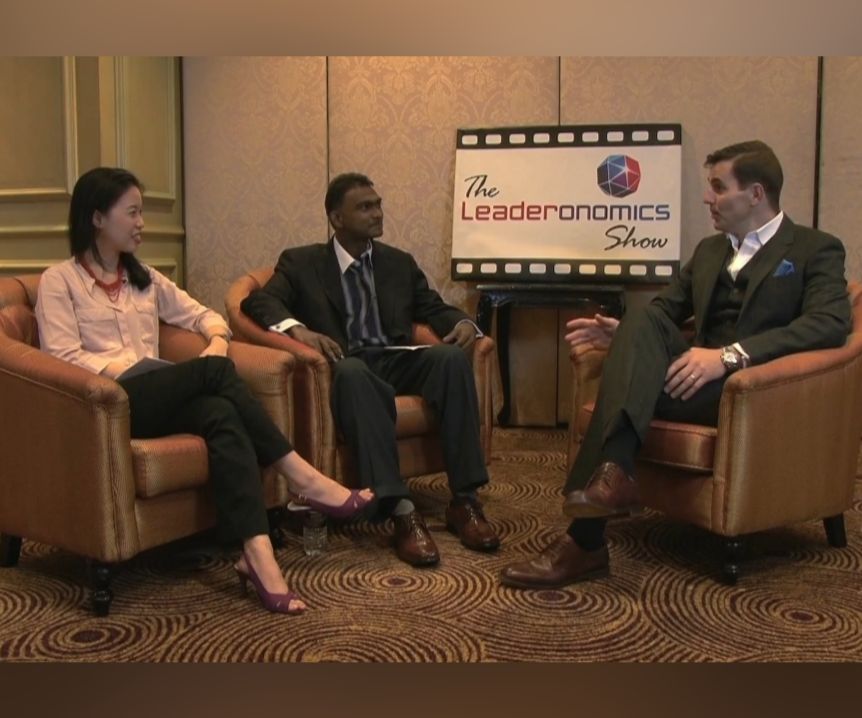Supporting Those Who Support You

A leadership style that brings out the best in employees
The renowned Chinese philosopher Lao Tzu once said: “To lead people, walk beside them. . . ”
It’s interesting to note that he didn’t advise leaders to walk behind or even in front of those they lead: his pithy words of wisdom—as they so often do—offer a fresh perspective on the subject of leadership.
Since the 1970–80s, the complexity of management styles has given rise to a number of theories which seek to pin down the most effective ways of leadership within business in recognition of the importance of addressing and taking care of emotional well-being.
The previously grey, formulaic approach to leadership (which really just concentrated on the management of people) came armoured with despicable stock phrases such as, “The customer is always right,” and, “Leave your problems and emotions at the door.”
Treating employees like robots on the clock was bound to be a recipe for disaster, and has proven to be the case in years gone by.
The formula for great leadership
While we’re a far distance off from the workplace utopia we’d all like to see, where employees are fulfilled and happy and bottom lines are bulging, there have been great inroads made to understand the value of truly effective leadership and what goes into making a truly great leader.
There is no set formula for making a great leader, and with research from Gallup suggesting that a staggering 87% of employees worldwide are not engaged (63%) or are actively disengaged (24%), there is much work to be done.
On the bright side, organisations are becoming increasingly aware of this and are making great strides to make the workplace the best that it can be.
One style of leadership that has emerged in recent decades is that of Supportive Leadership. Taking the lead from the wisdom of Lao Tzu, supportive leaders walk beside those they are tasked with nurturing and developing.
We might be forgiven to think that supportive leadership is a fancy term for being “nice” to others. However, rather than seeking to be agreeable, supportive leaders are those who are always looking to do what’s necessary to ensure the well-being of their team and, in turn, deliver a high standard of performance by alleviating any unnecessary obstacles.
… supportive leaders are those who are always looking to do what’s necessary to ensure the well-being of their team and, in turn, deliver a high standard of performance by alleviating any unnecessary obstacles.
In the book, Primal Leadership: Unleashing the Power of Emotional Intelligence, author Daniel Goleman explores the core tenets of great leadership and how leaders can cultivate certain qualities in order to get the best out of others.
He hits the nail on the head when it comes to defining the nature of supportive leadership: “Not that leaders need to be overly ‘nice’; the emotional art of leadership includes pressing the reality of work demands without unduly upsetting people.”
Giving team members the support needed
Goleman added: “Visionary leaders help people to see how their work fits into the big picture, lending people a clear sense not just that what they do matters, but also why.”
Supportive leaders recognise that their team—indeed, their organisation—is made up of individuals, and that these individuals have hopes and dreams, fears and concerns, and can suffer from worry and anxiety if they feel there is too much pressure in the workplace, or that they are overburdened beyond their capability to cope with what’s being asked of them.
The most effective leaders will take time to get to know their individual team members and make it a point to let them know that they realise their lives don’t begin and end with office hours. They’ll take the time to listen and be on hand to lend any kind of assistance possible in order to help make the workplace a more pleasant and inspiring place to be.
This serves two key purposes: it means that team members will feel that they have a voice that’s heard, which will make them feel appreciated and be seen as a valued asset to the organisation. As a result, this will lead to an increase in motivation, creativity and drive, which is bound to have a positive effect on the team’s and the organisation’s overall productivity.
Embrace failure for success
Another key aspect of supportive leadership is the acceptance of mistakes and failures. Great leaders know that some deals will fall through, that projects will fail, and that some new initiatives will turn out to be flat-out disasters.
But they recognise that, despite being counter-intuitive, accepting mistakes and failures as forming part of the path to success, is a behaviour that will inspire growth and confidence within a team.
In his book, The Best Place to Work: The Art and Science of Creating an Extraordinary Workplace, social psychologist Ron Friedman suggests that organisations that genuinely embrace failure as part of the process are bound to see more positive results in the long run than organisations that put pressure on employees to avoid making mistakes.
He writes: “When the consequences of reporting failure are too severe, employees avoid acknowledging mistakes altogether. But when a work environment feels psychologically safe and mistakes are viewed as a natural part of the learning process, employees are less prone to covering them up.
“The fascinating implication is that fearful teams avoid examining the causes of their blunders, making it all the more likely that their mistakes will be repeated again in the future.”
Interestingly, Friedman sees significant value in mistakes, describing them as “the tuition you pay for success.”
He goes on to say that, “The moment evading a negative outcome becomes the focus, our attention narrows and our thinking becomes more rigid.
“We have a hard time seeing the big picture and resist the mental exploration necessary for finding a solution. All of a sudden, insights become a lot more elusive.”
It is said that genius isn’t measured by the amount of success a person has, but rather by the amount of times a person can start over again. History is littered with success stories which, if we examine them closely, reveal—from Edison to Einstein, Picasso to Pollock—many mishaps along the way to success. Success, it’s said, is 99% perspiration and one per cent inspiration.
Key attributes of a supportive leader
A vital trait of supportive leaders is their ability and willingness to create space for trial and error. We can take a look at almost any form of creativity and see that it takes time for the end result to come together.
Whether it’s building a house or a car, painting a picture or writing a sonnet, nothing comes together immediately, and effective leaders recognise theirs is no difference within the confines of office walls.
Their focus is on achieving goals and objectives while keeping the emotional well-being of their team at heart.
In nurturing and developing individuals within an environment that supports creativity and innovation, great leaders know that a supportive approach to leadership is one that will inspire and drive people on to bigger and better achievements, which will ensure their fulfilment and, for the organisation, lasting success and prosperity.
Parting thoughts
In knowing that the role of a supportive leader has achieved its aim of alleviating unnecessary stresses from the team in order that each member is able to perform to a high standard, we again turn to Lao Tzu, who advised this:
A leader is best when people barely know he exists, when his work is done, his aim fulfilled, they will say: we did it ourselves.
5 Practical steps to supportive leadership
Supportive leadership is about cultivating an environment that is conducive to limiting the stresses and frustrations of team members. This style of leadership is particularly useful within a high-energy and vibrant organisation that expects much from its employees.
While team members should be expected to carry out their roles dutifully and to a good standard, there are some simple actions leaders can perform in order to ensure distractions and headaches are minimised.
1. Ensure people know what they’re doing
While it sounds like stating the obvious, a global survey carried out by Gallup revealed the staggering statistic that only half of employees “strongly agree” that they know what’s expected of them at work, which is worrying for all concerned since expectations are met only when employees fully understand their roles.
Remove doubts from employees by making sure they know their role—they’ll thank you for it through their performance results.
2. Clarify tasks
If you’re a leader and don’t know what your team members are doing and why, how can they be expected to know?
Their job is to carry out tasks that are geared towards helping the organisation achieve particular goals. However, if they find a task too complex or to be all over the place, at best they’ll be able to deliver half-baked results.
By laying out exactly what you’re after from your team, they’ll be in the best position to make sure it happens.
3. Set the standard
What’s the endgame and how do we get there? Team members will perform better and become driven and motivated towards a vision when they understand the criteria for success.
As a leader, it’s your job to set out your stall and inspire your team to pull together in the same direction by answering three key questions: What are we doing? Why are we doing it? How do we get there?
4. Provide guidance
It’s easy to believe that others think the way you do, see the same things you do, and understand the bigger picture as you do. To be an effective and supportive leader, it’s vital that you walk people through the steps of what you’re planning, and provide guidance and mentorship where it’s needed—because it will be needed.
5. Confront difficulties
Whether it be internal team conflict, a toxic team member, a difficult client or any other challenge obstructing the path to achieving a desired outcome, be sure to take swift action to resolve the problem.
Supportive leadership aims to reduce needless stresses and frustrations and, therefore, the best leaders are eager to make sure they deal promptly with any obstacle that gets in the way of the progress of their team.
6 Behaviours of supportive leaders
1. They accept others
The best leaders recognise that everyone has their strengths, quirks and weaknesses just as they have. They also know that solid teams are built by nurturing and bringing out the best that people have to offer, rather than trying to force individuals into the mould.
2. They show positive regard for others
Many of us have examples of overbearing bosses who are quick to cut others off, and not in a polite way either. Supportive leaders are always polite and considerate towards others, and are never arrogant or rude.
3. They get personal
It’s said that the sweetest sound we hear is our own name. Effective leaders remember to connect on a personal level with their team members. They use names frequently, politely enquire about well-being, and are down-to-earth when communicating with others.
4. They are sympathetic
Life doesn’t begin and end with work. You’d think all leaders would know this, though some seem to behave otherwise. We all have so much going on in our lives and sometimes, this will lead us to feel anxious and concerned.
Supportive leaders are attuned to the feelings of others, and they are quick to offer a sympathetic ear or shoulder to cry on whenever required.
5. They express belief in others when times get tough
When an employee is struggling with a task, or dreading a big presentation, great leaders are on hand to deliver effective pep talks. What’s more, they truly mean what they say, all-too-aware that employees can smell insincerity a mile away.
6. They are patient
Even the most successful leaders make mistakes—the best have made them often! Emotionally intelligent leaders know the value of patience and that growth is never immediate but comes with steady progress through learning.
They take good care in nurturing members of their team, and recognise that their patience will pay dividends both in the short and long term.
Considering philosophers such as Lao Tzu and Socrates, Sandy is almost convinced that the secret to cultivating great leadership lies in possessing a magnificent beard. Facial hair aside, he is always impressed by the results and motives of supportive leaders. To connect with Sandy, find him on Twitter @RealSClarke. To find out the various business and leadership simulations offered by Leaderonomics, email us at training@leaderonomics.com. For more Consulting Corner articles, click here.
Leadership
Tags: Be A Leader





